Character reference letter template for landlord
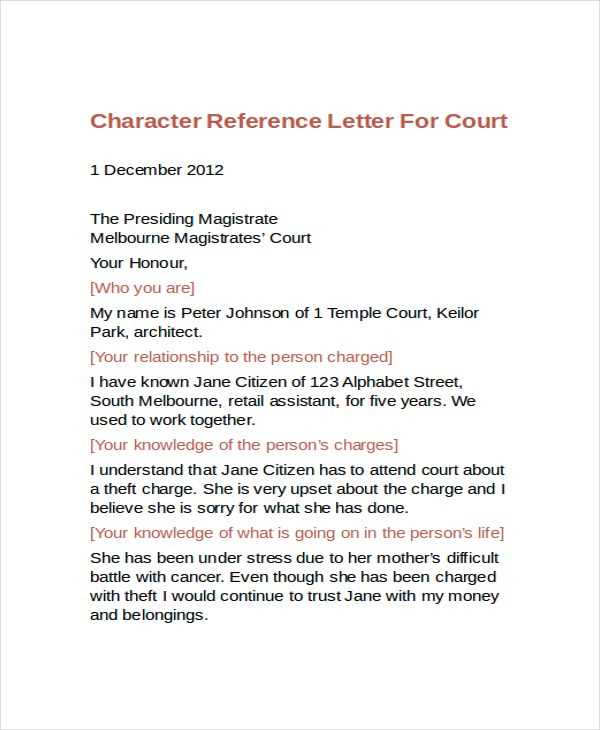
To write a character reference letter for a landlord, focus on presenting a reliable and positive image of the tenant. Start by mentioning how long you’ve known the individual and in what capacity. Be specific about the qualities that make them a good tenant, such as responsibility, cleanliness, and punctuality in payments. Highlight their ability to follow rules and respect property, as these traits are highly valued by landlords.
Be direct and clear about your recommendation. Use examples of how the tenant has demonstrated respect for others and maintained a good relationship with neighbors. If applicable, mention any positive interactions or actions that show their reliability. Offer your contact information in case the landlord needs further verification or additional details.
End with a concise statement reinforcing your confidence in the tenant’s ability to fulfill their responsibilities as a tenant. This simple yet informative approach provides landlords with the necessary insights to make an informed decision.
How to Tailor the Tone to Impress Landlords
Use a respectful and polite tone while maintaining a confident and approachable style. Landlords appreciate clarity and professionalism, so avoid using overly casual language. Keep your sentences direct and to the point, while still conveying warmth and sincerity. Showing enthusiasm for the property and the opportunity to rent it will leave a positive impression.
Be Specific About Your Qualities
Highlight traits that directly relate to being a reliable tenant, such as punctuality with payments, respect for property maintenance, and a history of good communication. For example, instead of saying “I’m responsible,” mention specific actions you’ve taken in the past, like paying rent on time or ensuring your previous living spaces were well cared for.
Adjust the Tone Based on Your Relationship with the Landlord
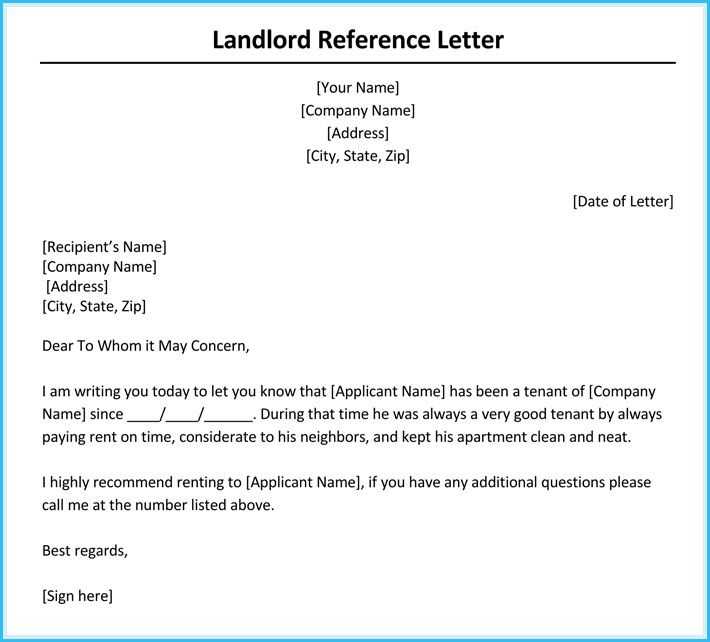
If you already have an established relationship with the landlord, a more conversational tone is acceptable. However, if you’re applying to a new landlord, stick to a formal tone. Personalize your letter by referencing your shared interactions or interest in the property without being too familiar. This balance will show both respect and personality.
Crafting a Strong Opening for the Reference Letter
Begin by clearly stating your relationship with the tenant. Be direct and specific about how long you’ve known them and in what capacity. This immediately establishes your credibility and context for the reader.
Example: “I have had the pleasure of renting to John Doe for the past three years as his landlord, and I have found him to be a reliable and responsible tenant.” This straightforward approach highlights your connection and provides clarity from the start.
Next, make a brief mention of the purpose of the letter. A concise statement about the tenant’s character will set the tone for the rest of the reference. Avoid overly broad statements, focusing instead on tangible qualities that apply to the rental situation.
Example: “During this time, John has consistently paid his rent on time, maintained the property well, and been respectful of the neighbors.” This adds immediate value to your recommendation by addressing specific behaviors.
Avoid generic phrases and make sure the opening sounds personalized. This will show the reader that your reference is genuine and not simply a form letter.
Highlighting the Tenant’s Best Qualities with Specific Examples
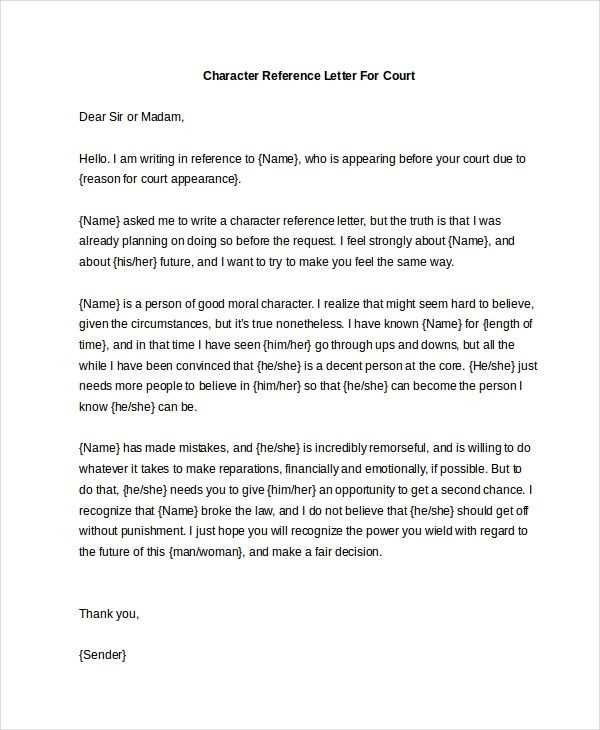
Focus on the tenant’s reliability by sharing instances where they consistently paid rent on time. For example, “For the past two years, [Tenant’s Name] has always submitted the rent by the first of each month, without exception.”
Point out their maintenance habits by detailing how they care for the property. “They’ve kept the apartment in excellent condition, addressing minor issues like a leaking faucet promptly, ensuring no long-term damage occurred.”
Describe their positive interaction with neighbors. “On several occasions, [Tenant’s Name] helped neighbors with heavy lifting or shared important community updates, which built a sense of camaraderie in the building.”
Provide insights into their respect for rules. “They’ve adhered to the building’s quiet hours and made sure to keep noise to a minimum, even when hosting guests.”
Use tangible examples to demonstrate their responsible behavior, like keeping the property clean or communicating any concerns right away. “When a small appliance malfunctioned, [Tenant’s Name] contacted me immediately, which allowed me to arrange for a repair before it became a bigger issue.”
By providing specific examples like these, the letter will create a clear picture of the tenant’s positive traits.
How to Conclude the Letter and Offer Further Contact
Close the letter by reinforcing your support for the individual’s tenancy. Clearly state that you’re available for further inquiries and willing to provide more information if needed.
Provide Your Contact Details
Include your full name, phone number, and email address to ensure the landlord can easily reach you. Mention your willingness to answer any questions they may have about the tenant’s character or reliability.
End with a Polite Sign-Off
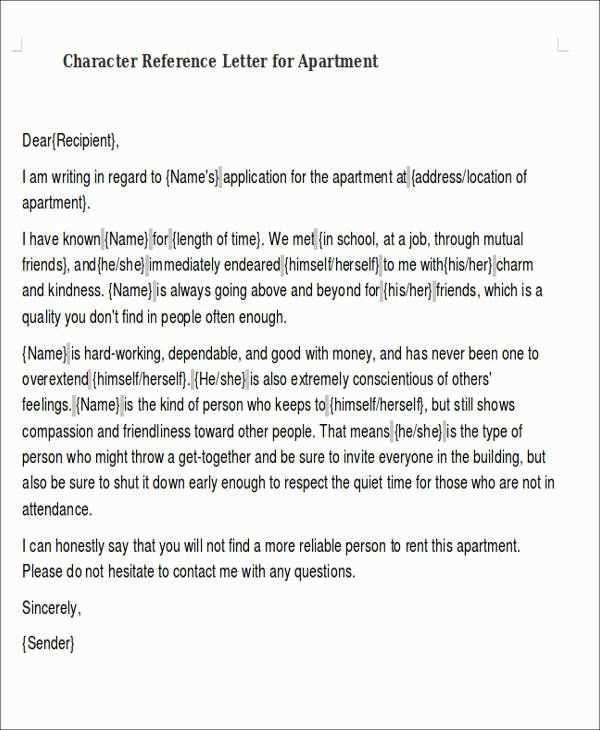
Finish with a courteous phrase, such as “Feel free to contact me at any time for more information.” This shows openness and reinforces your commitment to assist in their decision-making process.
Formatting Tips and Common Pitfalls to Avoid
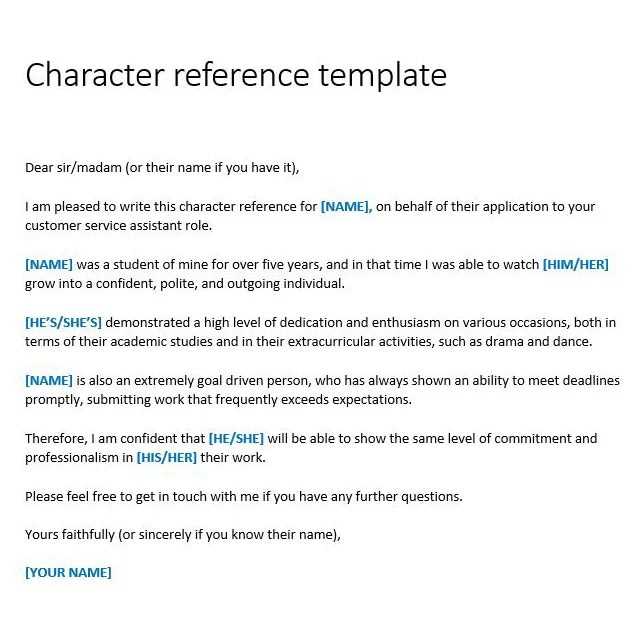
Stick to a clean, easy-to-read format. Use a standard font like Arial or Times New Roman, size 12. Margins should be set to 1 inch on all sides to provide enough white space around the text.
- Avoid excessive length: Keep the letter concise. A brief and clear letter is more impactful than one that is too long. Aim for a length of one page or less.
- Use bullet points for key qualities: If you need to highlight specific qualities or experiences, use bullet points to keep the information easy to scan.
- Check alignment: Ensure that the text is properly aligned, especially the contact information at the top. This should be left-aligned or centered, depending on your preference.
- Don’t overcrowd the page: Leave adequate space between paragraphs and sections to avoid a cramped appearance.
- Be mindful of tone: Maintain a professional and friendly tone throughout. Avoid informal language or overly casual phrases.
Common mistakes to avoid:
- Spelling and grammar errors: Always proofread your letter before submitting. Even small mistakes can create a negative impression.
- Overuse of adjectives: Refrain from using excessive adjectives. Stick to specific examples and facts to describe the character of the individual.
- Incorrect address or contact details: Double-check that the contact information is correct and properly formatted.
- Failing to personalize: Tailor the letter to the specific situation. Avoid using a generic letter that could apply to anyone.